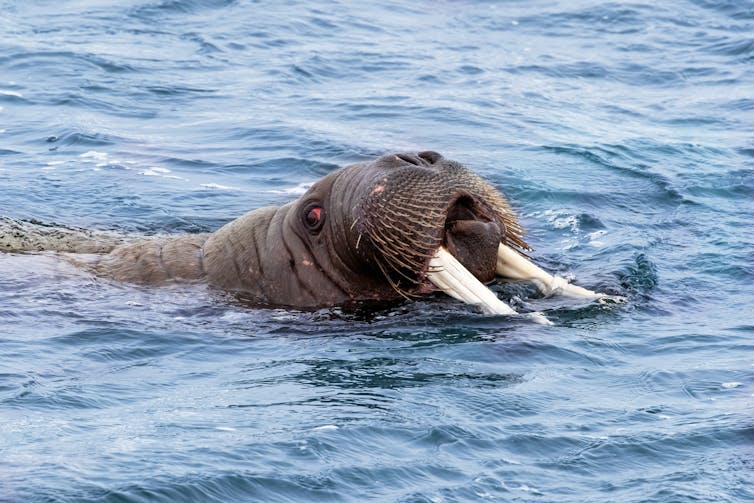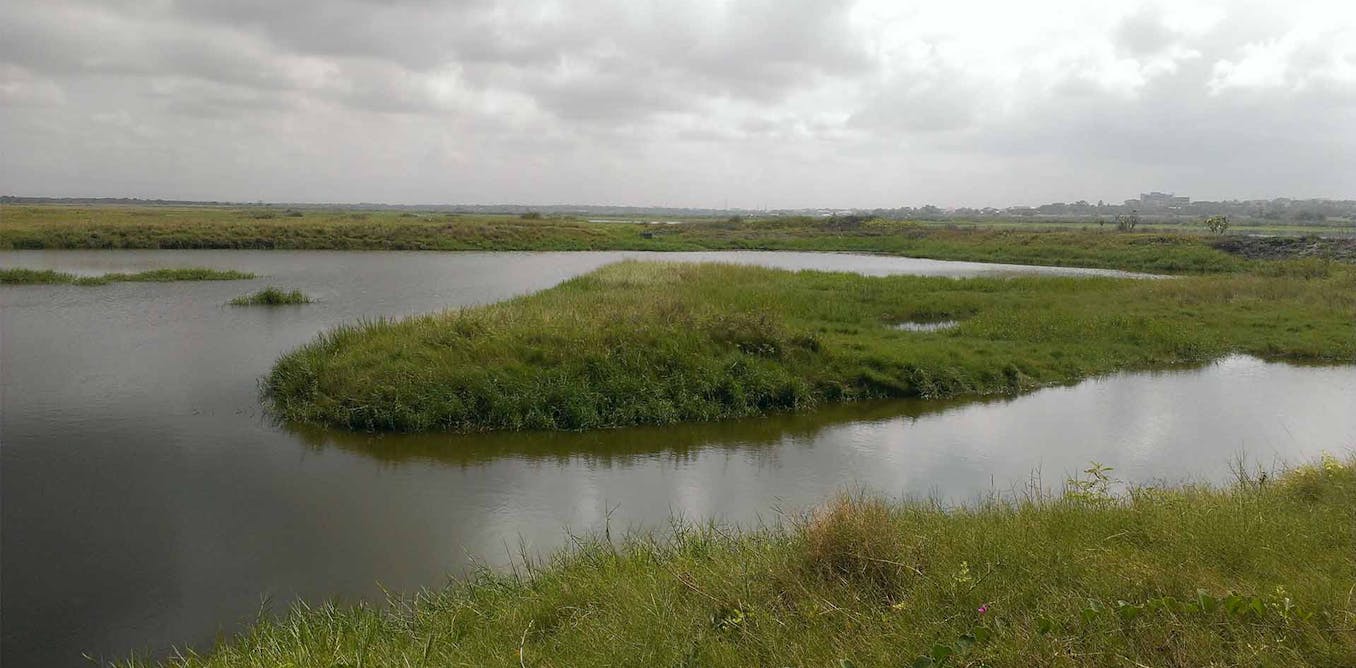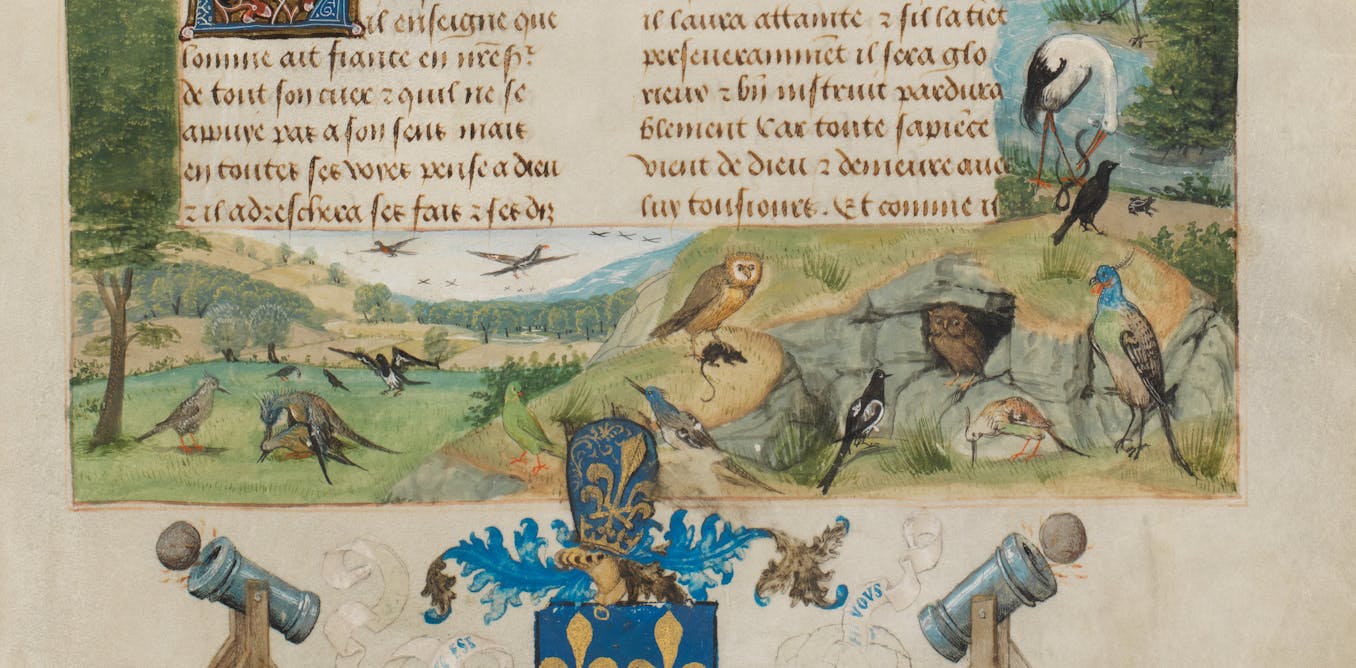In the animal kingdom, penises can be spiked, split, corkscrewed – even detachable. They’re one of the most diverse structures in biology. The human penis is so uniform, it’s an anatomical outlier. Understanding why penises evolved, and why they differ so widely, also helps explain why humans have one at all.
Penises first evolved as a solution to one simple problem: how to achieve internal fertilisation.
The first animals lived in the sea before our ancestors started living on land half a billion years ago. Today, many aquatic animals still simply release sperm and eggs into the water. However, as organisms moved to land, a new mechanism was needed to transfer sperm into the female body – enter the penis.
But here’s the twist: not all land animals use one. Around 97% of bird species have no penis at all. Instead, they reproduce with a “cloacal kiss”. This is a brief contact between a single opening that serves the digestive, urinary and reproductive systems and through which sperm is transferred.
The cloacal kiss demands choreography. For most birds, mating success hinges on split-second timing, elaborate courtship and perfect physical alignment. Animals with penises have an anatomical shortcut. They can deliver sperm straight to the target, even if the encounter is brief or a bit clumsy.
So penises are just one solution among many. But once evolution settles on a penis, the possibilities multiply. It is a prime example of convergent evolution, where different, unrelated, lineages develop similar traits in response to similar pressures.
mycteria/Shutterstock
In some species, penis size is driven by environmental constraints and access to mates. The barnacle, a crustacean glued to a rock for life, has the longest penis relative to body size of any known animal (up to eight times its own length). This allows it to “fish” for mates in the surrounding water. For those that may be wondering, the largest penis, at 2.5-3 metres, belongs to the blue whale.
The banana slug is a hermaphrodite with a thick penis as long as its body, evolved for deep sperm placement to boost fertilisation chances. Sometimes it gets stuck during withdrawal, and the partner bites it off. But the slug normally heals and survives.
Penile structures are often adapted for sperm competition, which is when multiple males mate with the same female, and their sperm compete internally for fertilisation. In these species, the penis becomes a competitive tool.
The domestic cat, for instance, has backward-facing spines on its penis. These stimulate ovulation in the female, ensuring sperm meets a ready egg, but also discourage mating with other males by making withdrawal painful.
In bedbugs, males take it further. They use a dagger-like penis to stab through the abdominal wall and deposit sperm directly into the body cavity. This “traumatic insemination” gives the male a bypass route – but at significant cost to the female. It’s not typically deadly, but the injuries take time and energy to heal.
Nowhere is this evolutionary struggle more vivid than in ducks. Some species of male ducks have corkscrew-shaped penises that can extend in under half a second. This is a response to female ducks evolving highly convoluted vaginas with dead-end pockets and spirals that twist in the opposite direction. This is a textbook example of sexual antagonistic co-evolution, where male traits that increase fertilisation rates are countered by female traits that limit male control.
In many reptiles, evolution has solved the problem of mating posture, the physical position and alignment of the bodies during copulation, with a pair of reproductive tracts. Snakes and lizards have hemipenes – two separate organs, only one of which is used per copulation. This redundancy probably evolved for flexibility, allowing mating from either side, and may be an adaptation to maximise success in brief mating windows.

Jane Rix/Shutterstock
In mammals, the penis can be reinforced by a bone: the baculum. Found in species such as dogs, chimpanzees and walruses, it allows penetration without relying on blood pressure. This structural support is useful in species where mating is prolonged or where mechanical stimulation during copulation is needed to trigger ovulation, in awkward or extended couplings like those of walruses, and when female anatomy or behaviour favours longer copulation.
What do these penises tell us about humans?
Compared to this dazzling variety, the human penis seems almost conservative. But this simplicity is deceptive.
Unlike many other mammals, humans lack a baculum. Instead, erection relies on blood flow. This mechanism may reflect a shift from brief, frequent copulations typical of high-sperm-competition species, to longer, emotionally bonded pairings. In this type of pairing, a visible, hydraulically produced erection serves not only a reproductive function, but also acts as a signal of arousal and health.
Human penile shape may still reflect adaptations to sperm competition. Scientists think the slight flaring of the glans at the corona, a prominent anatomical border between the glans and the shaft, may displace rival sperm during intercourse. This is not unusual among mammals, but in humans it may be especially important because intercourse and ovulation are often not perfectly timed, giving more scope for sperm competition. Human sperm can survive in the female reproductive tract for up to five days.
The glans and the sensitive underside frenulum contain a high concentration of sensory nerve endings that make them particularly sensitive to touch. This heightened sensitivity is thought to provide not only pleasure, but also real-time feedback. It allows the penis to respond to subtle variations in movement, pressure and partner interaction. Such feedback may have played a role in enhancing mutual sexual engagement.
Read more:
Scientists ignored animal clitorises for centuries – now we’re discovering just how varied they are
A 2011 genetic study published in Nature found that humans lost specific DNA sequences that control the development of penile spines – small, keratinised projections on the penis that in chimpanzees and macaques help increase friction and stimulate the female during mating. These spines probably increased stimulation and shortened copulatory duration. Their loss in humans may reflect a shift from competition to cooperation.
This ties into another crucial aspect of human reproductive evolution: concealed ovulation. Unlike many mammals, human females do not advertise their fertility. In response, males evolved a strategy based on sustained sexual access, emotional connection and mate guarding.
The human penis is not just a reproductive organ, but part of a broader behavioural system tied to trust, intimacy and long-term partnership.

The post “The surprising world of animal penises and what they reveal about humans” by Michelle Spear, Professor of Anatomy, University of Bristol was published on 11/26/2025 by theconversation.com




































Leave a Reply